...I thought that [sailing] farther [south]... would be a loss of time that might be employed with a better prospect of success examining the coast to the northward; about one, therefore, in the afternoon, I [turned to the north]. The high bluff head, with yellowish cliffs, which we were abreast of at noon, I called Cape Turnagain, because here we turned back.
Lt. J. Cook, 17 October 1769, The Voyages of Captain James Cook, p. 131
Lt. J. Cook, 17 October 1769, The Voyages of Captain James Cook, p. 131
Unlike Cook, our first approach was from the west. Finding our way to the north blocked by the tides, we turned back to the west again at about midday. Progress up the cliffs was blocked either by steep faces or seemingly impenetrable flax, and we thought we might have a better prospect of success examining the coast a little to the west.
We set off from Herbertville Motorcamp at about 10am, crossing the Wainui River and travelling along the gravel road which follows the river down to the beach. From there it was an easy walk along the beach to the start of the Cape. At the Cape the surface immediately adjacent to the water changed from sand to fossil-encrusted rock. We elected to stay down on the rocks and walked around what we assumed was the Cape. Having skirted around one seal we found we needed to continue on the sandy ledge. We progressed for perhaps another 50 metres until we could see into the next bay. The tide was up and further progress would be impossible.
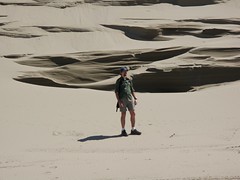 In front of a dune. | 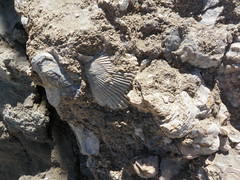 Fossil shells in the rock. |
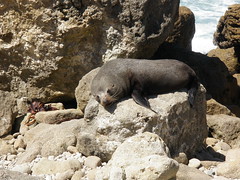 Seal resting on the rocks. | 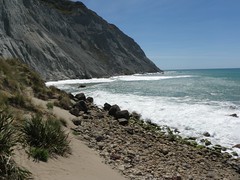 The way ahead blocked by the tide. |
We headed higher up the low lying land, looking for an obvious route up the cliffs. A number of sheep tracks offered promising starts only to peter out in dense flax. After several false starts some tracks leading up a gully offered more prospect of success. Small areas of open land were connected by sheep "tunnels" through the flax and other bushes. Eventually we cleared the last of the flax and bush and were in open land. We found an area in the shade and stopped for a few minutes for lunch.
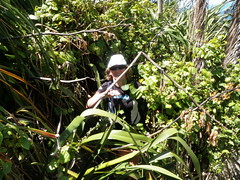 Pushing through the flax and scrub. | 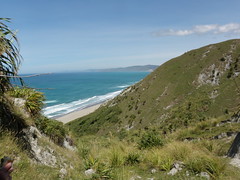 Where we stopped for lunch. View south along the gully that we were climbing. |
Having eaten we pushed on up the steep hillside, using sheep tracks where they existed and zig-zagging across the hill where they did not. Jan suggested we aim for a small saddle to our left. When we reached there we found a small cutting that lead through to a farm track, and the track lead eastwards and up the hill in the direction we wanted to travel.
The track was windy and exposed in places, although the temperature was never cold. There were dramatic rock formations on some of the ridges, and the land dropped away to a lower plateau to the seaward side. Having reached the obvious high point and being at what we assumed to be the Cape, we turned again - this time briefly to the south to obtain better views before regaining the farm track and returning west.
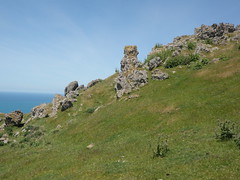 | 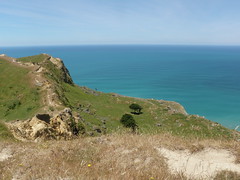 |
From the saddle we followed a different gully down to the coast. This one proved to be very quick and easy travelling. At its base was a small rise with a very prominent rock on top. Dropping down the other side we found that we were behind the very large dune that had impressed us on our outwards journey. Over the top of the dune and then we were back down to the beach. From there we travelled along the beach past the lagoon formed by the Wainui River, returning to Herbertville via Seaview Road.
More photos available on Flickr.
The Voyages of Captain James Cook is available online at Google Books.
The Voyages of Captain James Cook is available online at Google Books.
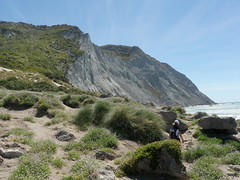
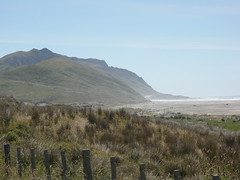
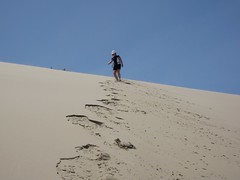
0 comments:
Post a Comment